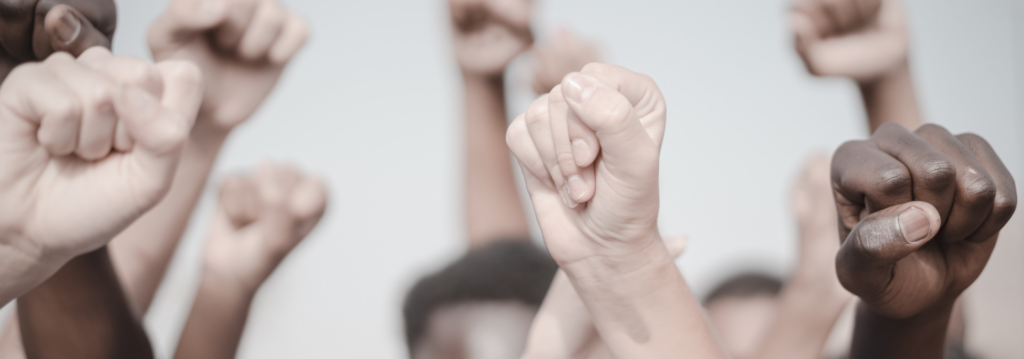
The fight against racism in schools is not a battle waged in isolation but a collective journey towards understanding, acceptance, and unity.
Educational leaders are positioned to foster an atmosphere where every child can thrive and here are some strategies that schools can use to counter racism.
In the shadow of global conflicts, like the ongoing strife in Gaza, the ripples of discord can manifest in the most unexpected of places, including the hallways and classrooms of our schools.
Australia, known for its diverse, multicultural landscape, is not immune to these challenges.
The integrity of educational environments, impeded by the presence of racism, subtle or overt, hampers the holistic development of students. As educational leaders, it’s our responsibility to recognise, address, and dismantle these barriers, fostering an atmosphere where every child can thrive.
Understanding Racism – More Than Prejudice
Racism in schools extends beyond individual acts of prejudice. It’s a multifaceted phenomenon encompassing systemic policies, cultural biases, and entrenched societal norms that collectively marginalise certain groups. It’s crucial to distinguish between isolated incidents of bigotry and a pervasive culture that subtly perpetuates discrimination. Understanding this complexity is the first step in crafting effective strategies to combat racism.
The Impact on Victims and Bystanders
The effects of racism on young minds are profound and far-reaching. Victims often experience diminished self-esteem, academic disengagement, and long-term psychological trauma. However, the impact isn’t confined to the victims alone. Bystanders witnessing racism grapple with confusion, fear, and guilt, especially when unsure about how to respond. This climate of tension and unease can pervade the entire school environment, affecting learning outcomes and relationships.
Teachers as Catalysts for Change
Teachers play a pivotal role in addressing racism. When they observe racial discrimination, their response can either reinforce the status quo or challenge it. Proactive strategies include:
• Immediate intervention. Addressing racist incidents promptly and firmly, sending a clear message that such behaviour is unacceptable.
• Supportive dialogue. Engaging the victim in a supportive conversation, acknowledging their experience, and providing the necessary emotional and academic support.
• Educational response. Transforming these incidents into learning opportunities and discussing them openly in the classroom foster a deeper understanding among all students.
Building Resilience and Empathy in Students
Mitigating the risks of racism involves nurturing an environment where empathy and understanding are core values. Teachers can:
• Incorporate inclusive curricula. Ensure that teaching materials reflect a diverse range of perspectives and experiences, providing students with relatable and positive representations of different cultures.
• Foster critical thinking. Encourage students to critically analyse stereotypes and prejudices, facilitating discussions that challenge preconceived notions.
• Promote cross-cultural interactions. Create opportunities for students to collaborate on projects or participate in exchange programs, fostering personal connections and cultural appreciation.
Leadership in Cultivating a School Culture of Inclusivity
School leaders and administrative systems are instrumental in shaping the school’s ethos. To create a culture that actively mitigates the chances of racism, they can:
• Policy development. Implement clear, comprehensive policies that define racism, outline its consequences, and provide a structured protocol for addressing incidents.
• Professional development. Invest in regular training for staff, enhancing their ability to recognise, understand, and tackle racism effectively.
• Community engagement. Partner with parents, local organisations, and cultural groups to create a supportive network reinforcing the school’s commitment to inclusivity.
• Safer reporting mechanisms. Establish confidential channels for students and staff to report racist incidents, ensuring they are addressed promptly and sensitively.
Building Bridges – the Way Forward
As education leaders, our mission transcends academic instruction; we are entrusted with the noble task of shaping future citizens. In light of the global unrest mirrored in the Gaza conflict, our resolve to combat racism must be unwavering. It demands a concerted effort, a willingness to confront uncomfortable truths, and an enduring commitment to nurturing an educational sphere where diversity is celebrated, and every child is cherished.
In conclusion, the fight against racism in schools is not a battle waged in isolation but a collective journey towards understanding, acceptance, and unity. It’s a path paved with challenges, but the rewards – a generation of empathetic, informed, and compassionate individuals – are immeasurable.
As leaders, educators, and stakeholders in this shared community, our actions today will echo in the classrooms of tomorrow, resonating with the promise of a more inclusive, respectful, and harmonious world.


